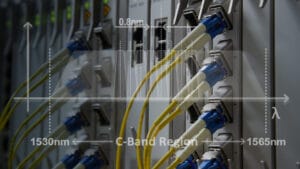
So far in our “Cleaning Your Optics” series, we’ve highlightedthe importance of keeping optics and cables clean, and also walked through thesteps and tools requiredto clean them. In the final installment of this series, we’ll discuss ongoing transceiver maintenance and other common handling procedures that will keep your network running optimally.
Schedule a Full Cleaning
After transceivers are deployed, it’s easy to assume they will just work indefinitely. However, dust particles and other contaminants can still work their way into your connections and build up over time. Therefore, we recommend periodic inspections and cleaning of all transceivers and fiber cable connectors. The frequency of your cleaning schedule should be determined by the environmental conditions of the facility.
As a reminder, use only specially-designed cleaners and wipes on your connectors. Using other cloths (or worse, your fingers) may leave behind a residue that makes the situation worse, as shown below:

When optical transceivers and fiber cables are not in use, make sure the connectors are covered with their respective dust plugs to prevent damage or contamination.
Prevent Receiver Burnout
A common problem with handling transceivers is accidentally burning out an optic’s receiver when performing lab testing. The leading cause is improper attenuation due to a miscalculation of the optical power budget within the test setup. Extended-range optics (e.g., 40km and up) are particularly susceptible to this because of the high output power required to travel long distances. We recommend always using attenuators when testing optics with longer rated distances. In field applications when you don’t have an attenuator handy, leaving an air gap between the optic’s laser and fiber cable can sufficiently attenuate the signal as well, although not as precisely as a connect or-specific attenuator.
Ongoing maintenance is essential to getting the most out of all your network equipment long after initial deployment. Interested in learning more about maintenance and proper handling of optics?Contact us today!

